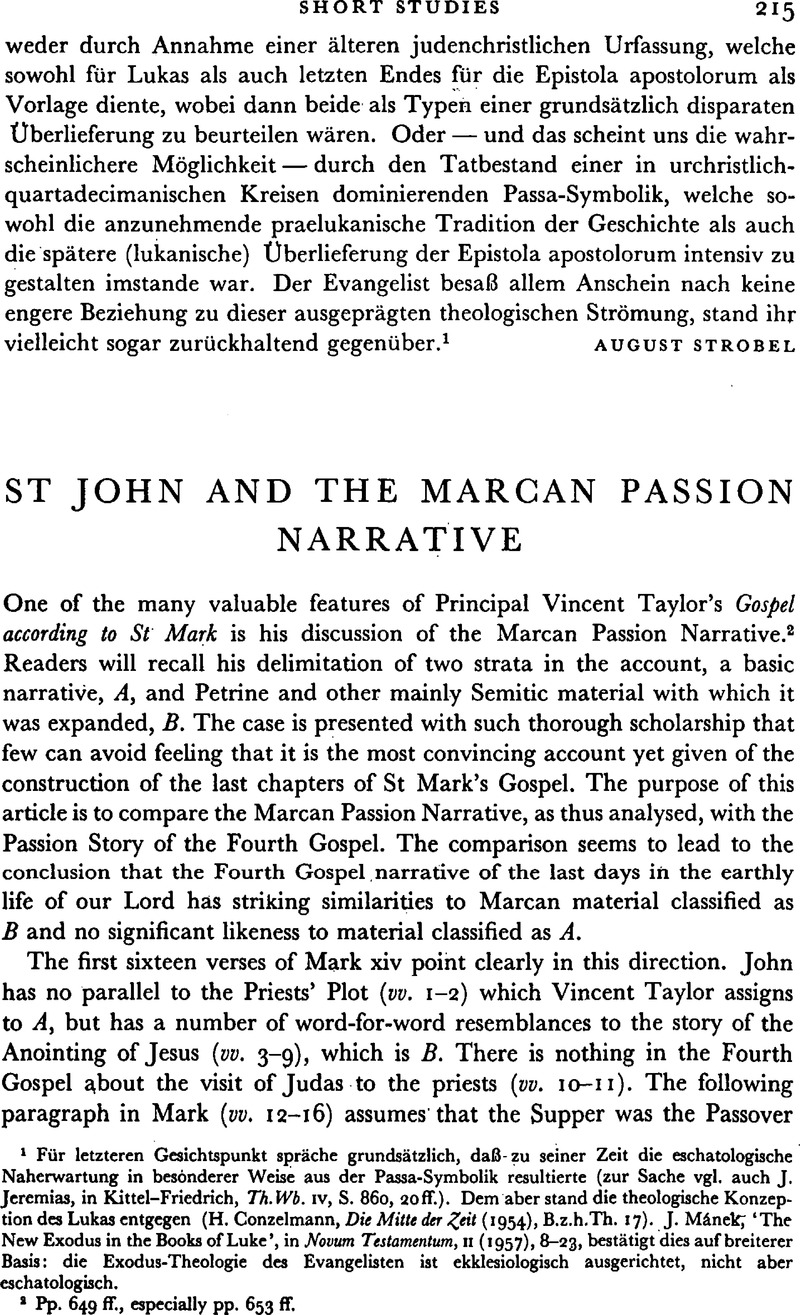Published online by Cambridge University Press: 05 February 2009

page 215 note 1 Für letzteren Gesichtspunkt spräche grundsatzlich, daß- zu seiner Zeit die eschatologische Naherwartung in besénderer Weise aus der Passa-Symbolik resultierte (zur Sache vgl. auch Jeremias, J, in Kittel—Friedrich, Th. Wb. iv, S. 860, 20ff.). Dem aber stand die theologische Konzeption des Lukas entgegenGoogle Scholar (Conzelmann, H, Die Mitte der zeit (1954), B.z.h.Th. 17).Google ScholarMánek, J ‘The New Exodus in the Books of Luke’, in Novum Testamentum, 11 (1957), 8–23, bestätigt dies aufbreiterer Basis: die Exodus-Theologie des Evangelisten ist ekklesiologisch ausgerichtet, nicht aber eschatologisch.CrossRefGoogle Scholar
page 215 note 2 Pp. 649 ff., especially pp. 653 ff.Google Scholar
page 216 note 1 P. 658.Google Scholar
page 216 note 2 Johannes und die Synoptiker, p. 70Google Scholar
page 216 note 3 P. 542.Google Scholar
page 216 note 4 Johannes und die Synoptiker, p. 186.Google Scholar
page 217 note 1 Gospel. According to St John, p. 440.Google Scholar
page 217 note 2 Fourth Gospel, p. 520. Hoskyns, of course, held that the Fourth Gospel was written with Mark in mind and so he continued, ‘but an echo of it appears in xix. 9 in a different context’. But surely xix. 9 need not be an echo of Mark. The silence of Jesus impressed itself upon early Christianity. Cf. I Peter ii. 23.Google Scholar
page 218 note 1 Johannes und die Synoptiker, p. 84.Google Scholar
page 218 note 2 P. 656: ‘a confident opinion is not possible.’Google Scholar